Which budget classic gives you more wrist bang for the buck — Seiko’s rugged field icon or Orient’s dressy underdog with surprising durability and value?
Two budget classics, one choice. This comparison contrasts the Seiko 5 SNK809 and the Orient 3 Star RA-AB0E06B, showing which suits casual, field, or dress use and detailing specs, performance, and value to help you decide with clear buying guidance.
Everyday Field
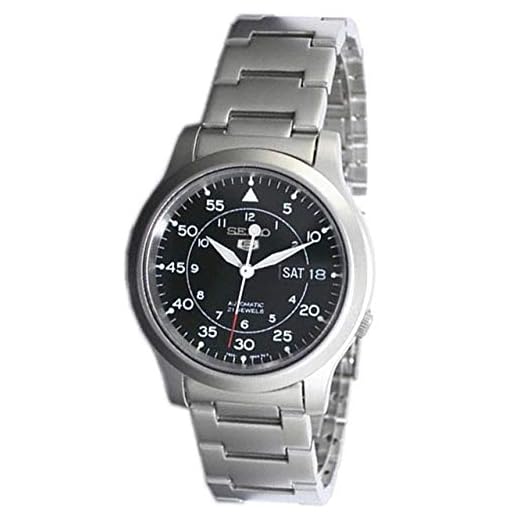
A straightforward, reliable automatic that delivers excellent everyday value and classic field-watch styling. It excels for buyers seeking a dependable, no-fuss mechanical watch at an accessible price.
Classic Value

A well-rounded automatic that blends approachable mechanical performance with a slightly more refined aesthetic than basic field pieces. It offers strong everyday usability and good value, particularly for buyers who prefer a dressier touch without a big price premium.
Seiko SNK809
Orient Tristar
Seiko SNK809
Orient Tristar
Seiko SNK809
Orient Tristar
Design, Build Quality and Wearability
Case, dimensions and materials
The SNK809 is compact and utilitarian: a 37mm stainless-steel case, ~13mm thick, mineral crystal and a 30M water-resistance rating. The crown sits at 4 o’clock for better comfort on the wrist.
Orient’s RA-AB0E06B uses a stainless-steel case and bracelet with mineral crystal and gold-tone hands/accents, presenting a visibly larger, more polished silhouette than the Seiko. The listing doesn’t supply exact case diameter/thickness, so expect a mid‑to‑large daily-wear presence and a conventional crown at 3 o’clock.
Dial, legibility and lume
Seiko’s black military dial is high-contrast with bold Arabic numerals and generous lume on hands/indices—excellent low-light legibility. Orient’s black dial is dressier: polished markers and gold-tone hands give a sharper look in daylight but typically less luminous performance.
Strap, finishing and perceived fit
The SNK809’s finishing is utilitarian and durable; the watch wears smaller and is great on 6–7″ wrists or on straps for a field look. The Orient’s bracelet and polishing read dressier and heavier on the wrist; it suits those who prefer a more substantial, formal appearance.
Durability and daily comfort
Both use mineral crystals (resistant to knocks but not sapphire-hard). Seiko’s crown placement and smaller dimensions favor all-day comfort and active wear. Orient’s better-polished surfaces resist everyday wear but will show scratches more readily — ideal if you want a smarter everyday watch.
Movement, Accuracy and Mechanical Performance
Movement basics
The Seiko SNK809 uses Seiko’s 7S26 21-jewel automatic — a decades‑old, workhorse caliber. It winds automatically only (no manual winding) and does not hack (seconds hand does not stop for precise setting).
Orient’s RA-AB0E06B is fitted with an Orient 21-jewel self-winding movement rated at 21,600 oscillations per hour (6 beats/sec). The listing confirms automatic winding but does not explicitly state hand-winding or hacking capability, so treat those features as not guaranteed unless the seller specifies them.
Power reserve and beats
Both movements typically deliver around a 40-hour power reserve and operate at 21,600 bph. That gives a familiar rhythm and smoothness for this price segment.
Expected accuracy and regulation
Out of the box you can expect:
Reliability, service and ownership impact
Seiko’s 7S26 has a proven history for reliability and low-cost servicing; parts and tech know-how are widely available. Orient’s in-house movements are also robust and generally straightforward to service, though parts and service networks can be less ubiquitous depending on region.
Recommended servicing interval for both: every 3–5 years with regular use to maintain lubrication and accuracy. Movement choice affects long‑term ownership mainly in expected accuracy, ease of service, and whether you need hand-winding/hacking for daily convenience.
Features, Functionality and Everyday Use
Day/date, crown operation and setting
Seiko SNK809: clear day-and-date display with quickset via the crown. Its 7S26 movement does not hack or accept manual winding, and the crown’s low-profile placement (comfort-oriented) makes daily adjustments unobtrusive.
Orient RA-AB0E06B: also offers day-and-date (including a Spanish day option) with quickset. The listing does not guarantee hand-winding or hacking, so expect standard automatic behaviour unless the seller specifies otherwise.
Lume and legibility
Seiko: high-contrast black dial with bold markers and strong lume—very readable in low light, good for early-morning commutes or dim offices.
Orient: dressier black dial with gold-tone accents; legibility is good in daylight but lume is more modest and less long-lasting than the Seiko.
Water resistance and durability for daily life
Seiko: listed 30M (splash-resistant) — fine for rain, hand washing, and accidental splashes; not suitable for swimming or showering.
Orient: listing doesn’t emphasize high WR — treat it similarly for everyday splash protection rather than aquatic use. Both use mineral crystal, which resists everyday knocks but can show scratches over time.
Strap interchangeability, weight and balance
Both watches use standard spring bars and will accept aftermarket straps, but confirm lug width before buying replacements. The Seiko’s compact 37mm case and lighter feel sit comfortably under shirt cuffs and suit varied straps; the Orient’s slightly dressier case and bracelet give a sturdier, dress/toy-box presence on the wrist.
Real-world use & extras
Feature Comparison
Price, Value Proposition and Ownership Costs
Current Amazon vs typical street price
Value relative to specs and resale potential
Warranty, support and aftermarket parts
Servicing costs and longevity
Who gets the better bang for your buck?
Buyer profiles
Final Verdict: Which Should You Buy?
Orient Tristar takes the overall win: its in house movement, stainless steel case and bracelet, and cleaner finishing make it the better long term value and everyday watch. The Seiko SNK809 remains the budget field watch champion — smaller, lighter, cheaper, and more military styled. Choose Orient for longevity and polish; choose Seiko if you need the lowest entry price and a rugged canvas look.
For value focused buyers the Orient Tristar is the best pick: better materials and movement for an extra cost. Enthusiasts who want mechanical pedigree favor the Orient for its in house movement and serviceability. If style or durability is your priority and you want a lightweight field aesthetic or the lowest price pick the Seiko SNK809. Decide? Try Orient for daily wear or the Seiko as a rugged backup.




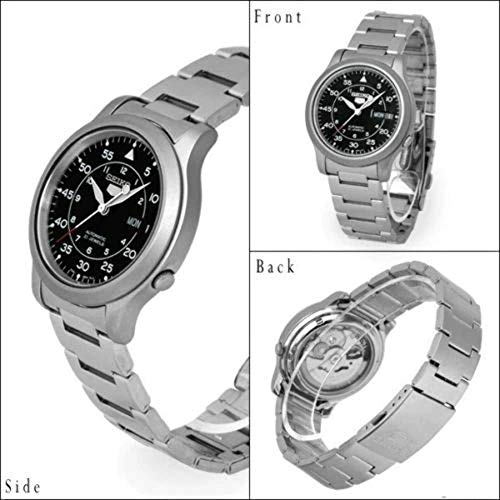
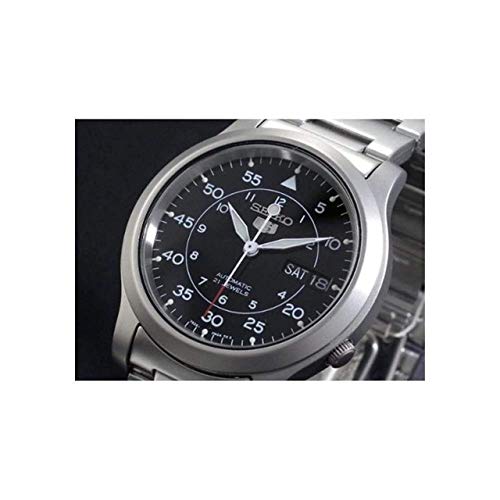
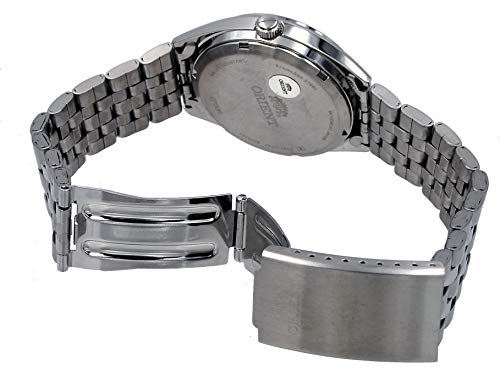

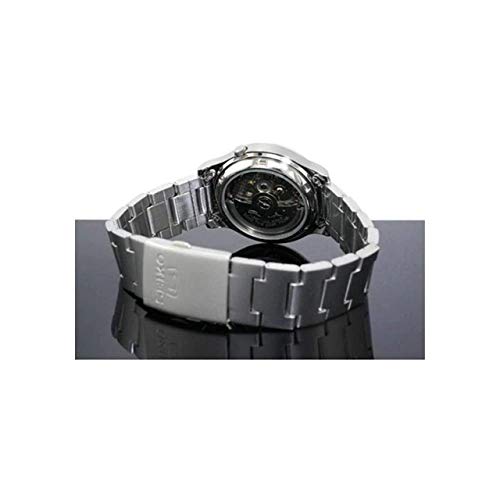
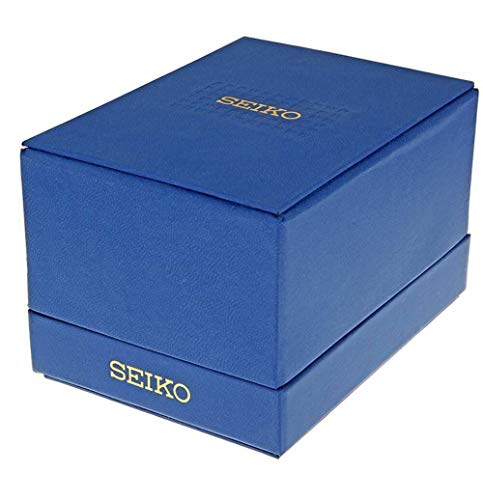
I’m split. I like the simplicity of the SNK809 but the Orient’s day/date and heavier bracelet sell it for me.
Anyone worried about servicing costs for either?
Servicing affordable automatics is generally inexpensive compared to higher-end brands. For both Seiko 5 and Orient 3-star, basic service costs are similar — the bigger factor is where you send it and how often.
Okay full disclosure: I bought the Seiko for the military look and the Orient for the office. Both ended up in rotation and honestly both punch well above their price.
Comparison notes:
– Durability: tie, both survive daily knocks.
– Style: Seiko = casual/field; Orient = versatile, leans dressy.
– Value: Orient slightly ahead if you like metal bracelets and day/date.
Also, the Seiko crown being tucked in gives it that classic field-watch aesthetic. If you want a larger, heavier piece, get the Orient. If you want lightweight, tool-watch vibes, SNK809.
TL;DR: Either is a win, depends on what you wear daily. 🙂
This is the kind of review I needed — thanks. Also seconding the rotate-both strategy. Best of both worlds.
Did you find the Orient heavier on the wrist? I worry it might be too chunky for me.
Rachel — it’s noticeably heavier, but not uncomfortable. Try it on if you can.
Tom — haha yes, now I have options for jeans vs blazer days 😄
Great breakdown, Sophia — very practical view. Agreed that wearer lifestyle decides the best choice more than raw specs.
Short and sweet: If you want a beater with military vibes, SNK809. If you want a slightly dressier automatic with day/date and heavier feel, go Orient. End of story.
Thanks for the comparison. I was on the fence for weeks and this helped. Small nitpick: I’d like to see a side-by-side thickness and lug-to-lug comparison table — makes it easier to judge wearability.
Also, anyone tried water resistance on either? I assume neither is a dive watch but are they ok for showering/rain?
Good suggestion — a thickness and lug-to-lug table would help readers. For WR: Seiko SNK809 typically is 30m, so not for showering; Orient 3-star varies but many are 30-50m. Neither is ideal for regular showering — stick to splash/rain.
I wore my Seiko in light rain with no issues, but never submerged. Better safe than sorry though.
Thanks! I’ll avoid showers with both then 😅
Quick question — does the SNK809 have hacking? I read conflicting things. Also is the Orient 3-star hand-windable?
SNK809 (Seiko 7S26 movement) does not hack and normally lacks hand-winding. Many Orient 3-star models do offer hand-winding and some hack, but check the exact movement variant (e.g., F6 series vs older ones).
To add: most cheap Seikos before the newer 7S36/4R36 updates didn’t have hand-wind. Orient usually gives more features for the price in that area.
Nice write-up! I own an SNK809 and picked it up as my first automatic — super reliable and the hacking? well, it doesn’t hack but for the price you can’t complain.
Pros I noticed: the dial is clear, lume is decent for everyday use, and the strap options are endless.
Cons: the case is a little small for my wrist (I have 7.5″) and the bracelet on some versions feels cheap.
I’m curious if anyone compared real-world accuracy between the Seiko 21-jewel and the Orient 3-star movement?
I had the same impression — my Orient ran a touch more accurately after a few weeks. Could be luck, but Orient movements often come regulated fairly well from the factory.
Thanks for sharing, Laura. In my experience the SNK809 typically runs +10 to +20 s/day out of the box, while many Orients can be a bit closer to +5 to +15. But there’s a lot of unit-to-unit variance.
Try a leather NATO on the Seiko — instantly makes it look less cheap. Also, size is subjective but the lug-to-lug fits nicely under my cuff.
I had an Orient 3-star for a few months — the stainless steel version feels solid and the black dial is quite sharp. The day/date window is a nice touch for work.
One thing to watch: the crown on mine was a bit fiddly to set at first. Nothing major but worth noting if you like to change settings frequently.
Stiff crown here too on the Orient — loosened up after a month. But yeah, that steel weight is pleasing compared to the Seiko’s lighter case.
Thanks Alex — good to know it’s not just me. 🙂
Does the Orient have hand-winding? If so, that could make daily adjustments easier.
Good point on the crown. Some users report the Orient crown can feel stiffer until it gets worn in. Seiko crowns tend to be smoother initially.
I kinda love the irony that both are ‘affordable’ but make me act like a watch snob when I explain why the dial finishing matters 😂
Serious note: the Orient’s applied markers and polishing are a small flex compared to the Seiko’s matte utilitarian face. If you like subtle class, Orient wins. If you like ‘won’t cry if it gets scratched’, Seiko wins.
Also PSA: swap the bracelet/strap — both look way better on a leather nato or a simple leather strap. Instant upgrade.
Marta — resale depends on condition & demand; not a big investment either way.
Resale: Orient and Seiko 5 both have decent second-hand markets. Models with original boxes/bracelets and good condition fetch more. Seiko 5 vintage pieces sometimes have a cult following, but it’s not a huge difference at these price points.
Liam same here. Also, don’t underestimate microfiber polishing cloths for removing micro-marks.
Does anyone know which one holds resale better? Thinking long-term.
Totally — I put a brown leather strap on my SNK809 and it transformed the look. People kept asking where I got it.
Haha, true — strap swaps are the quickest budget upgrade. And yes, Orient often has nicer finishing for the money.